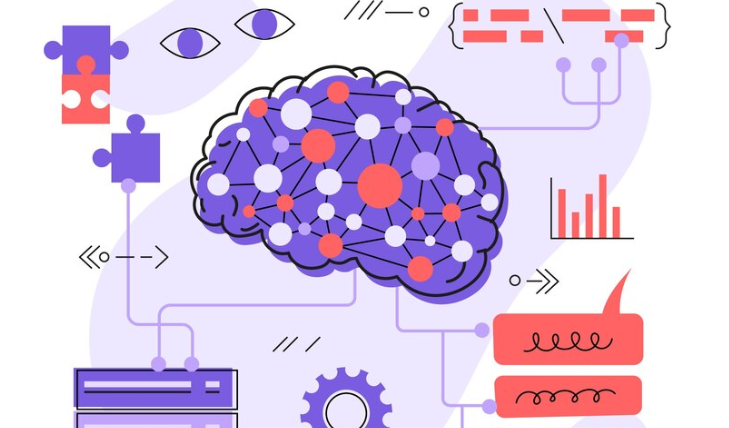Serendipity—the fortunate, unplanned discovery of something valuable—has long been considered one of life’s sweetest and most unpredictable moments. Whether it’s stumbling upon a life-changing idea, meeting a future collaborator by chance, or finding a hidden gem of a book in a secondhand store, serendipity feels magical because it’s spontaneous, unforced, and often beyond our control.
But in a world driven by data, algorithms, and optimization, is it possible to “hack” serendipity? Can we design environments that increase the likelihood of these happy accidents? Or is true serendipity something that should remain elusive, unpredictable, and organic?
What Is Serendipity?
Serendipity isn’t just luck—it’s the art of discovering something good while not specifically looking for it. It’s the accidental encounter that leads to a breakthrough idea. It’s the unintentional journey that results in something extraordinary.
While traditional definitions emphasize chance, the key ingredient in serendipity is openness: the ability to recognize an opportunity when it appears, even if it wasn’t the one you set out to find.
In the digital age, where everything is designed to be efficient and purposeful, the randomness and surprise of serendipity seem increasingly rare.
The Rise of the “Serendipity Economy”
From social media algorithms to data-driven product recommendations, we live in an era of precision and personalization. Services know what you like, when you like it, and where you’re most likely to be. But while this might enhance convenience, it often eliminates the unpredictable—the very essence of serendipity.
Think about the last time you discovered a new interest on a social media platform. It was likely the result of an algorithm—something designed to anticipate your tastes. This recommendation wasn’t a “happy accident”—it was a targeted, calculated suggestion.
Yet, some tech companies are exploring ways to bring the unexpected back into our digital lives. Companies like Google have launched experiments designed to promote serendipity, such as:
- Google’s “I’m Feeling Lucky” Button: A quick shortcut to random websites.
- Spotify’s “Discover Weekly” Playlist: A weekly surprise of curated music based on your listening habits.
- Reddit’s “Random” Button: A feature that lets users jump into unknown, random threads.
These initiatives are small steps towards introducing controlled randomness into digital spaces, giving users the ability to discover things they didn’t know they were looking for.
Creating Environments for Serendipity
While technology often limits the space for unexpected encounters, there are ways we can design our environments—both physical and digital—to foster serendipity. Here are a few approaches to “hacking” chance:
1. Diverse Networks and Interactions
Surrounding yourself with a diverse range of people and perspectives increases the likelihood of unexpected, valuable connections. Interacting with people outside your usual social or professional circle exposes you to new ideas, opportunities, and experiences that you might never have encountered otherwise.
2. Allowing for Unstructured Time
In a world of tight schedules and back-to-back meetings, carving out time for open-ended exploration is essential for serendipitous discoveries. Whether it’s spending an afternoon in a new café or wandering through a bookstore without a particular goal, unstructured time often leads to creative breakthroughs and random encounters.
3. Exploration Over Optimization
Instead of focusing solely on productivity, prioritizing curiosity can open doors to serendipity. Instead of always trying to optimize every task, leave room for exploration—trying something new without any expectation of success.
4. The Power of the “Serendipity Engine”
A digital tool that could encourage randomness and exploration in your workflow could resemble something like a “serendipity engine.” For example, a browser extension that leads you to a random article or idea each time you log on, or a tool that suggests an unanticipated connection between people in your network.
5. Physical Space Design
Creating physical spaces that encourage random encounters—like co-working spaces, creative hubs, or even cafés designed for conversations—can increase the chances of serendipitous meetings. Open, informal spaces without rigid structures are ideal for unplanned, valuable interactions.
The Role of Algorithms in Serendipity
Can algorithms foster true serendipity, or do they defeat its purpose? Algorithms are fantastic at matching users with relevant content, but they rely on patterns—patterns that are typically based on past behavior. This means that algorithms often offer what we already know we like—which could be the opposite of serendipity.
However, by tweaking algorithms to introduce controlled randomness, such as recommending content outside a user’s typical preferences or encouraging serendipitous connections in a social network, we can introduce a hybrid model of prediction and surprise. This would allow technology to play a role in curating unexpected, yet meaningful, experiences.
The Ethics of Hacking Serendipity
Introducing more randomness into the digital experience also raises ethical questions. Is it possible to encourage serendipity without infringing on user autonomy? Should algorithms have the power to present randomness, or is that crossing a line?
The concept of intentional unpredictability brings with it challenges about user control and consent. For instance, if users start encountering unexpected content or interactions, will they still feel in charge of their digital experience, or will they feel manipulated by the system?
Conclusion: The Balance Between Control and Chaos
While we can’t predict when or how serendipity will strike, we can create conditions that increase its likelihood. In a world increasingly dominated by structure, efficiency, and precision, finding ways to embrace the unpredictable—whether through human interactions or algorithmic design—reminds us that some of the best moments in life are the ones we don’t plan for.
So, can you hack serendipity? Maybe not entirely. But you can definitely build environments—both physical and digital—that encourage the unexpected to thrive.


